June 7, 2022
Do Triple Rainbows Exist?
A true third-order rainbow should not be confused with much more common phenomena.
Rainbows are one of the few things on Earth nobody hates. Can there be enough of them – or even too many? On rare occasions, you might have encountered a double rainbow before. But is it even physically possible to find a triple rainbow?
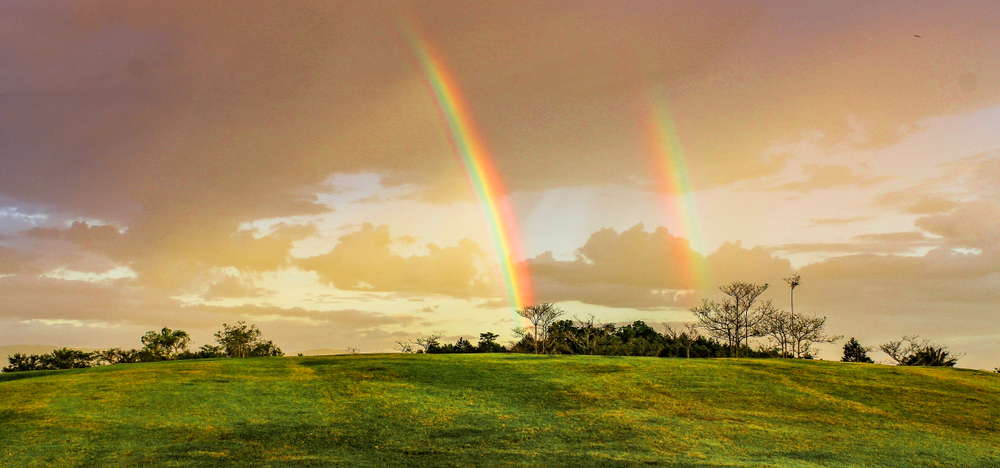
Among the many wonders on planet Earth, rainbows are known to every child. They frequently appear after rain, or more exactly: They appear when plenty of water drops are in the air in front of you and sun light shines onto them from behind you. Climate scientist and cloud expert Yi-Ling Hwong from the Muller research group revisits rainbow basics: “White sunlight consists of the whole spectrum of colors. As an electromagnetic wave, the light’s color is defined by its wavelength with purple being the shortest and red being the longest wavelength. Now, when passing through the surface of a droplet, the border of air and water, every wavelength, meaning every color inside white light, is being bent in a different angle, dispersed into a rainbow.”
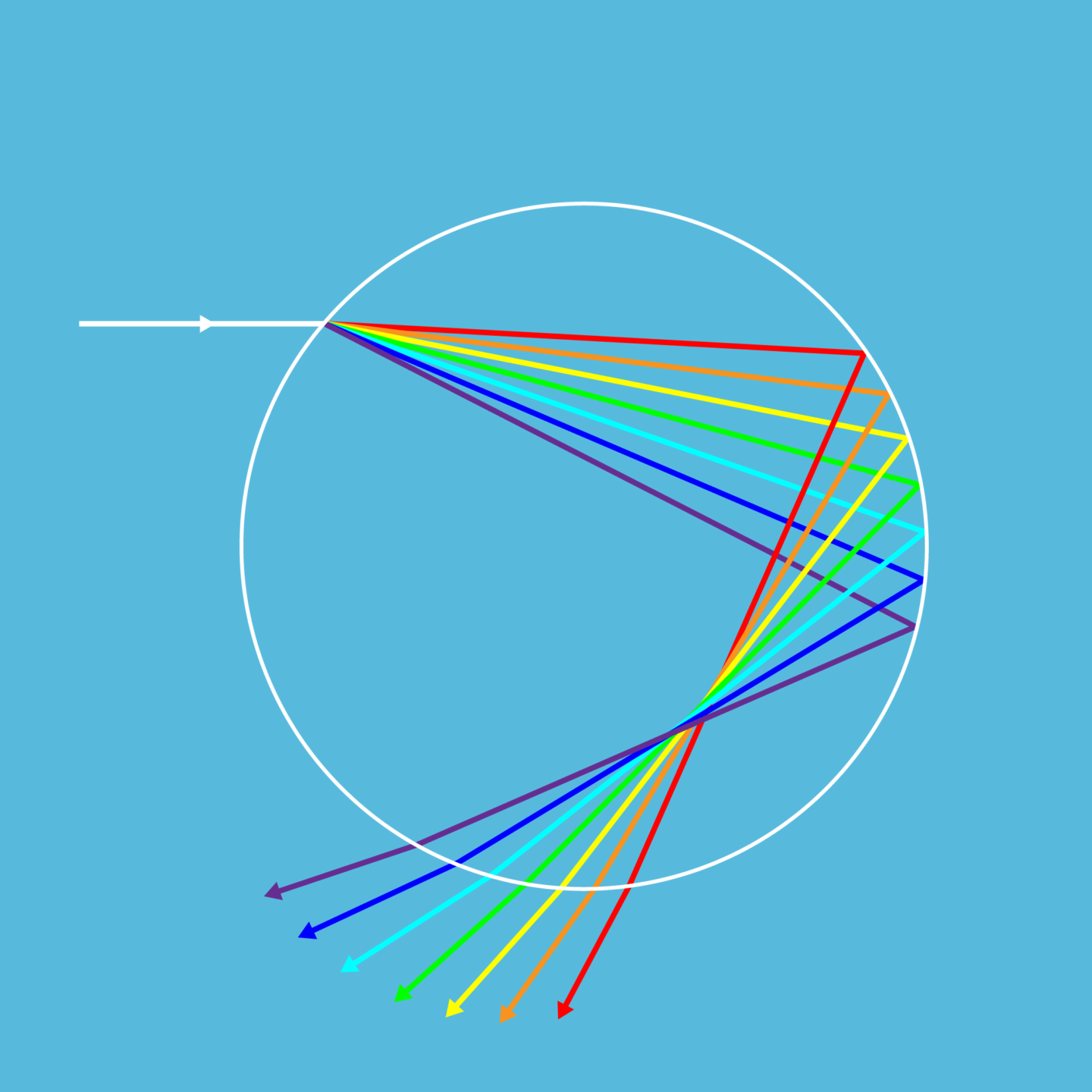
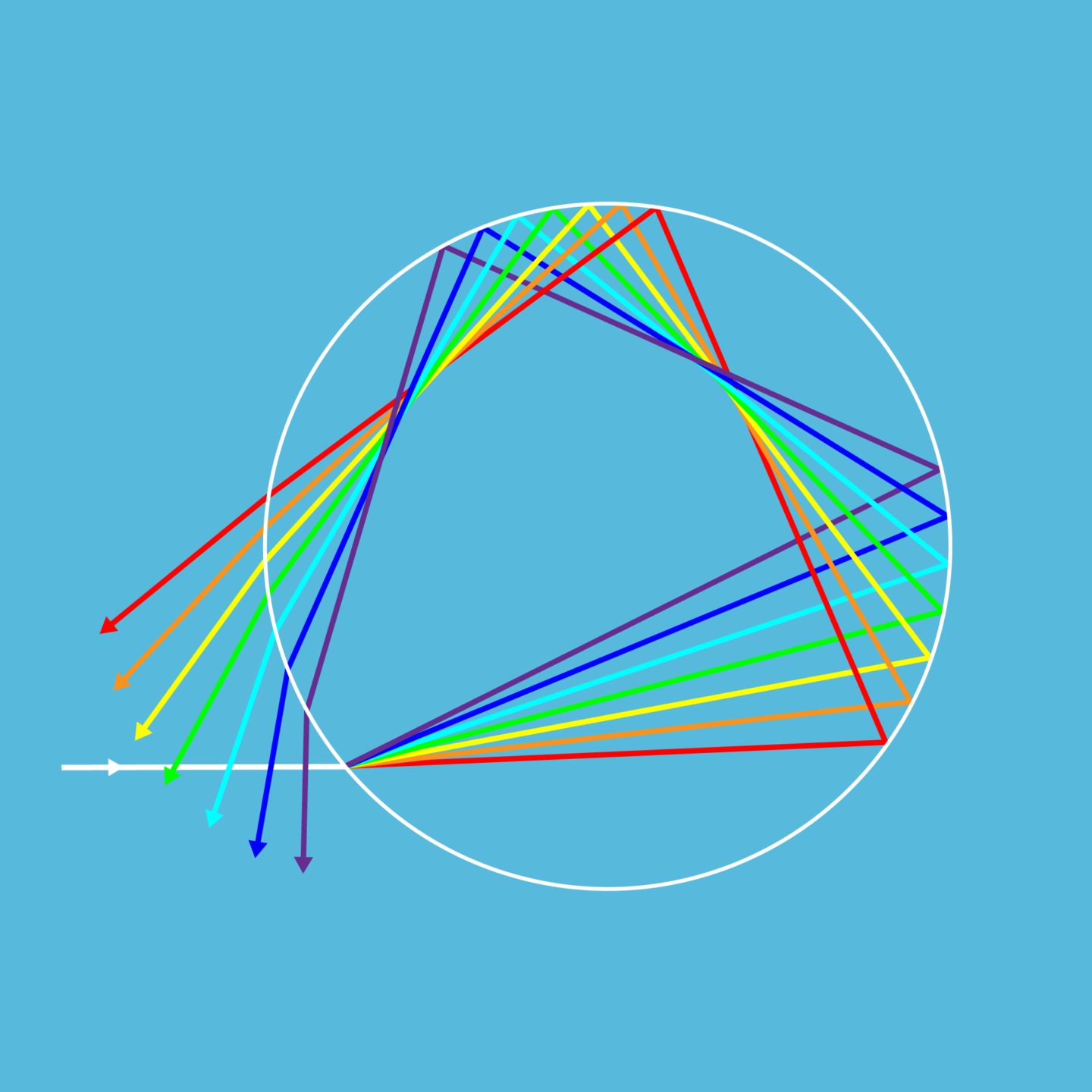
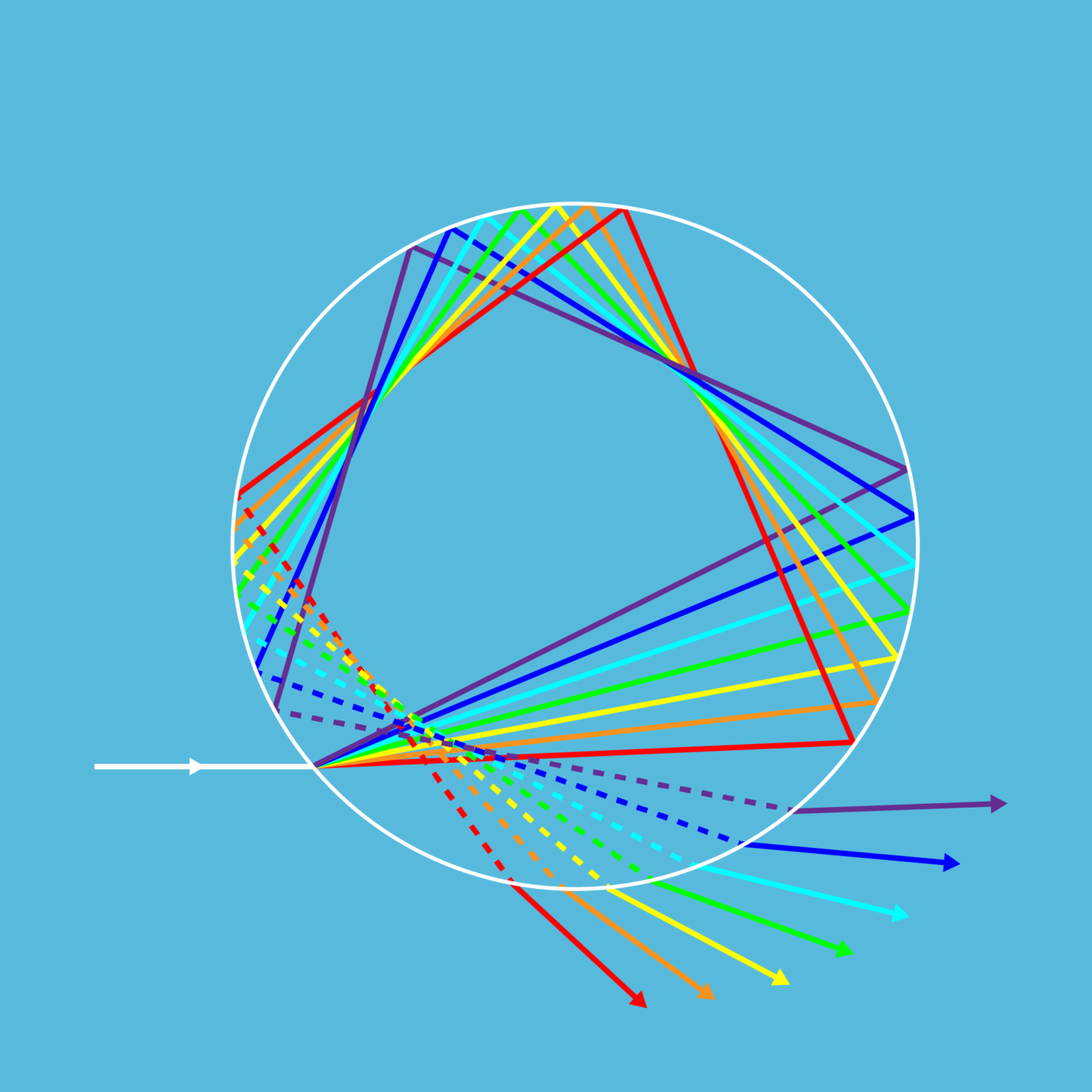
Images above: Light paths inside droplets. The surface refraction and the number of inner reflections define the order and angle of a rainbow: Normal rainbow left, double rainbow middle, and tertiary rainbow right. © ISTA
As red light is refracted less then blue light, it is seen at the outer rim and blue at the inner one. This first kind of rainbow is called primary arc. However, there are double rainbowstoo. For secondary arcs, the rays get reflected twice inside the droplet. At each reflection inside the droplet, a little light is lost. Due to the double reflection, the intensity of the secondary arc is lower and the color order reversed.
What about triple rainbows?
“First, yes, they exist”, clarifies Hwong. “Yet, a true third-order rainbow should not be confused with the much more common phenomena of supernumerary bows and reflection rainbows.” Third-order or tertiary rainbows originate from three reflections inside the droplet. In contrast to primary and secondary bows, rays leave the droplet heading away from the sun. Hence, to see a tertiary rainbow, one must look towards the sun. However, at an intensity only one fourth of the primary arc, the bright sunlight makes the rainbow almost impossible to spot. It was only in 2011, in the journal Applied Optics, that first photographic evidence was published. So, stay vigilant for rainbows – you may discover something new.
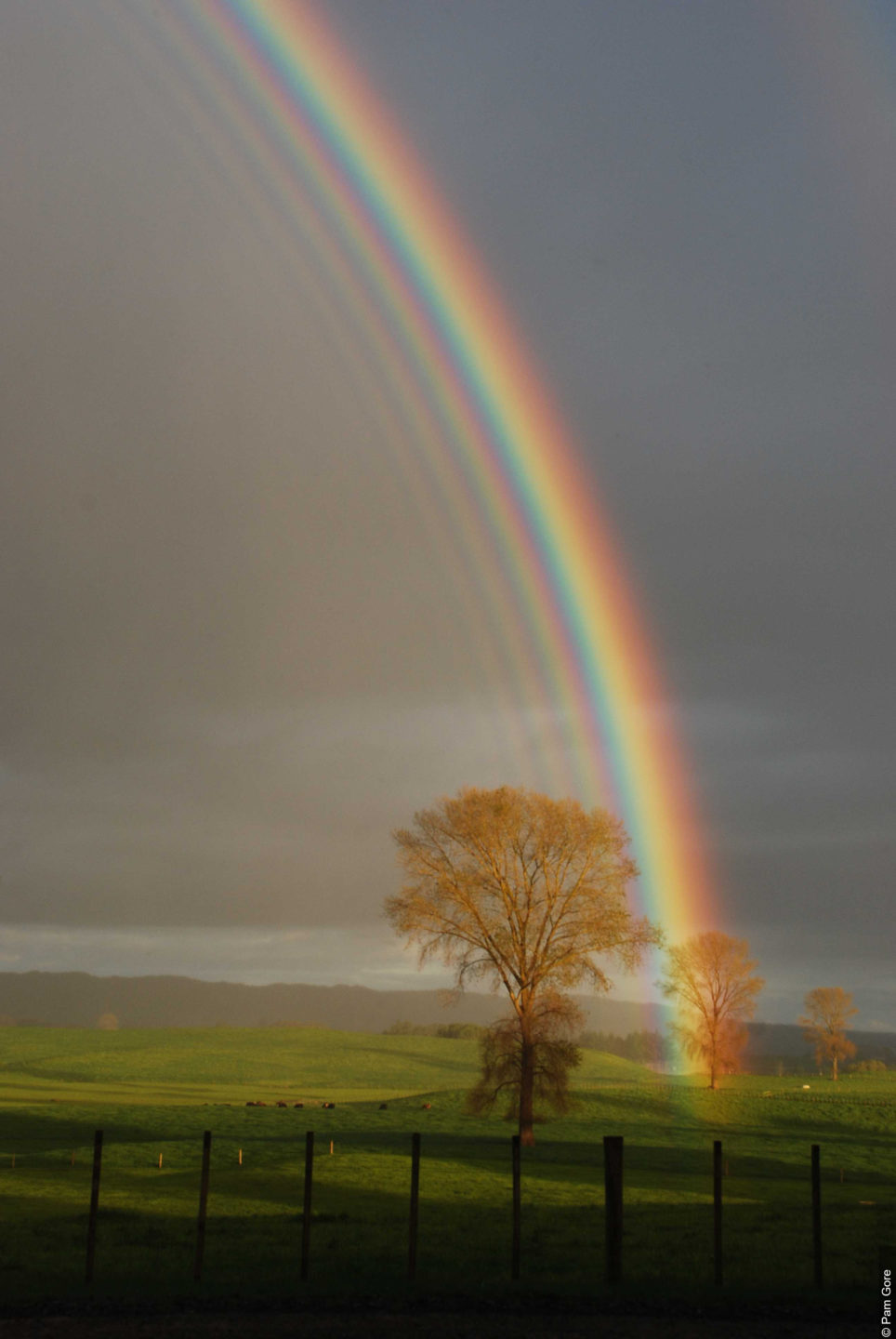
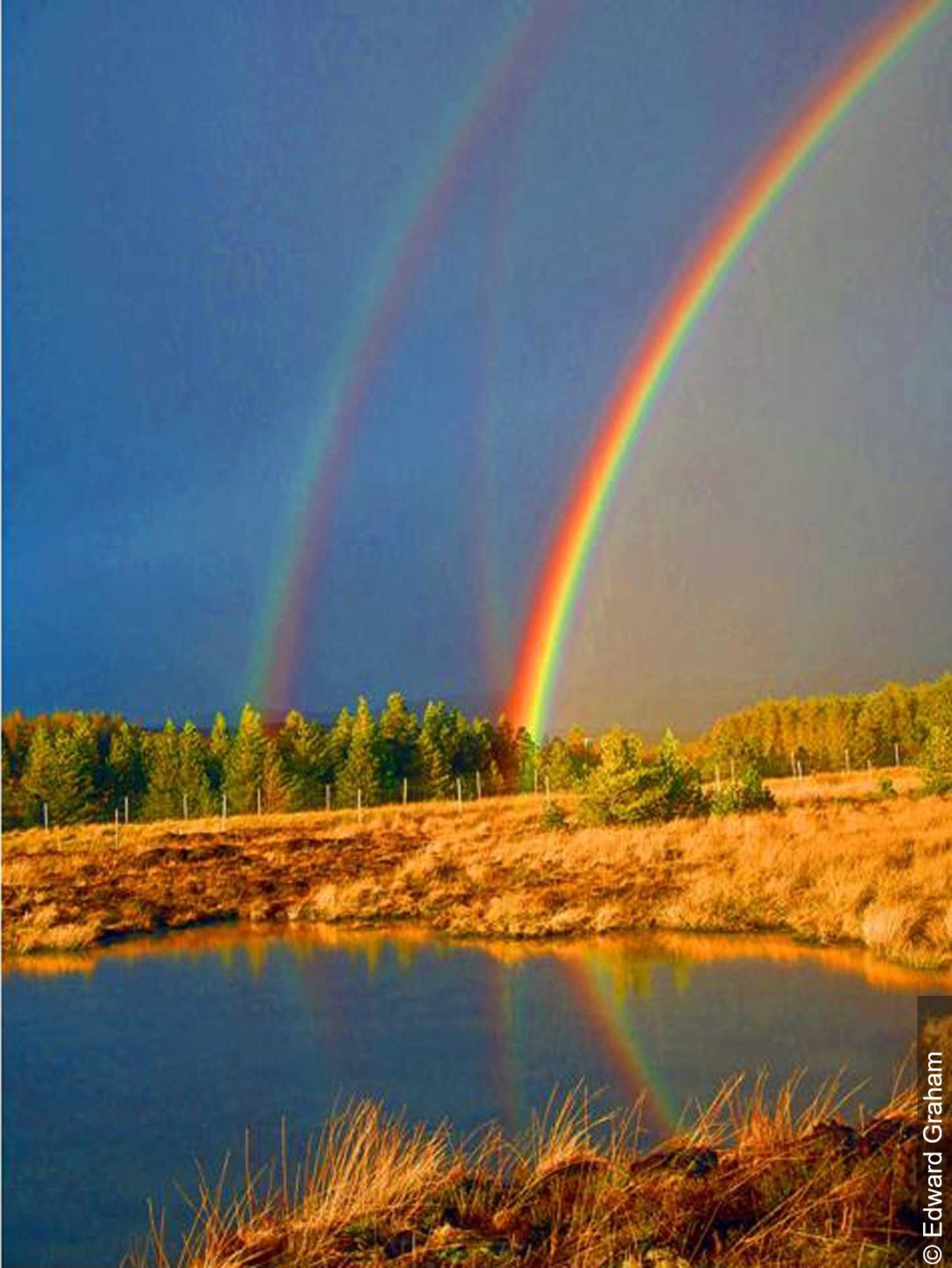
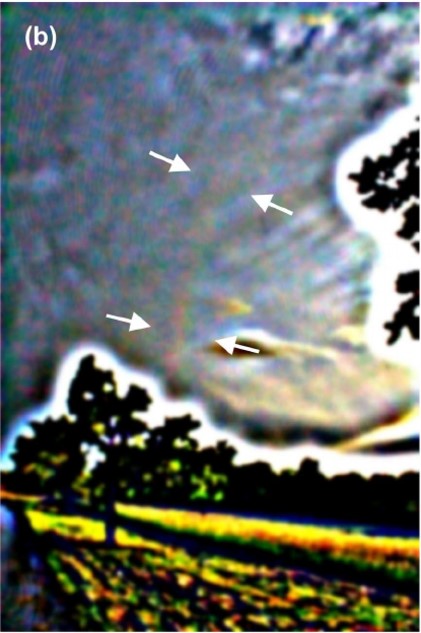
Image above: Various kinds of multiple rainbows. Supernumerary bows (left) are caused by interference and reflection rainbows (middle) by water bodies reflecting the source of light. Third-order rainbows (right) are visible in the direction of the sun and very faint. © WMO/Pam Gore; WMO/Edward Graham; Applied Optics/Michael Grossmann et al.



